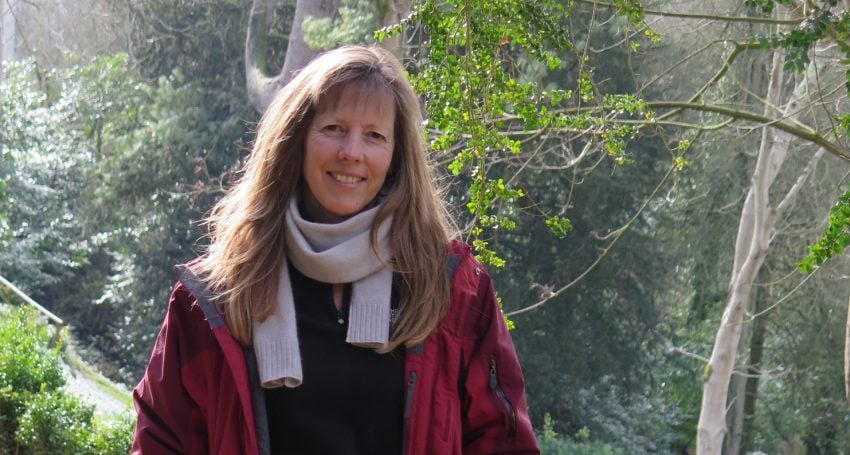“When such abuse comes to light, often it is the woman who is blamed”
Features
“Women survivors are at the forefront of highlighting and addressing abuse by clergy. Their efforts come at a cost. However, when abuse disclosures are met with empathy and constructive action, healing can take place — for the Church, as well as for those directly affected,” says The Rev’d Dr Miryam Clough

Australia’s Royal Commission into Institutional Responses to Child Sexual Abuse highlighted devastating levels of child abuse in Church-run institutions.
Whanaketia — Through pain and trauma, from darkness to light, the final report of New Zealand’s Royal Commission of Inquiry into Abuse in Care, released in July this year, produced similarly shocking findings.
Alongside evidence of the use of torture in state mental health facilities, one of the more alarming revelations from the New Zealand Commission of Inquiry is that the incidence of sexual abuse was greater in faith-based institutions than in state care. We are right to be horrified by the incidence of child sexual abuse in our Churches.
Less commonly understood, however, is that experts working in this field, including Dr Gerardine Robinson who gave evidence at Australia’s Royal Commission, assert that most victims of sexual abuse by clergy are adult women. When such abuse comes to light, often it is the woman who is blamed.
As Catholic theologian Dr Roćio Figueroa highlights, “[c]hurches often try to portray violence against women as if it were a consensual act, and even worse as a ‘romantic relationship’.” Figueroa, who has undertaken significant research on the abuse of nuns by church leaders, highlights the structural inequality in the Church and notes that in any pastoral relationship there is an implicit imbalance of power. Clergy have often taken advantage of this power imbalance to coerce women into sexual contact.
One of the witnesses at New Zealand’s Royal Commission was The Rev’d Louise Deans — she was instrumental in exposing the abuse of multiple women by a senior clergyman with responsibility for training ordinands, Canon Rob McCullough, following a conference of ordained Anglican women in 1989 that had highlighted the problem of sexual harassment by male clergy. As Deans noted, a priest interviewed at the time that this abuse became public had been “so upset by harassment from male clergy during her training,” she had considered abandoning her vocation altogether (Whistleblower, 2001, Tandem Press: 57).
Advertisement
Other women have abandoned their vocations — and the Church — often taking their families with them. The Wilberforce Foundation’s 2018 report Faith and Belief in New Zealand found that Church-based abuse, along with gender inequality and poor attitudes towards unmarried mothers and members of the LGBTQI+ community, are among the greatest obstacles to Christianity.
Other survivors of abuse by clergy have spent large periods of time away from the Church, often to the detriment of their vocations and careers. New Zealand’s Royal Commission of Inquiry noted the constraints on women’s leadership in the Church as a contributory factor in abuse. There are relatively few women in senior roles in the Anglican Church in Aotearoa, New Zealand and Polynesia, bullying is sadly common, and where women have experienced harassment and abuse, progression within the Church is all the more difficult. Those who speak out may be met with ambivalence or downright hostility.
For many women abused by clergy, the fight for accountability from the Church has proved too costly. Some have moved abroad and even changed their names. Survivors and their advocates have been forced out of their roles in ministry and Church leadership while abusers have been protected. Some have felt that their training or ministry roles have become untenable when their complaints of harassment or abuse have been disregarded. Often the process of reporting abuse is badly handled and retraumatising. The spiritual abuse that accompanies any act of abuse by clergy may leave women questioning their faith and the validity of their vocations to ministry.
Advertisement
The short- and long-term impacts on women’s physical, psychological and spiritual wellbeing cannot be underestimated. Several women described the impact of abuse by those in Church leadership on their lives and vocations in my book Vocation and Violence: The Church and #MeToo, which also examines factors that continue to enable abuse in the Church.
Women survivors are at the forefront of highlighting and addressing abuse by clergy. Their efforts come at a cost. However, when abuse disclosures are met with empathy and constructive action, healing can take place — for the Church, as well as for those directly affected.
An excellent resource, Accompanying Survivors of Sexual Harm: A Toolkit for Churches has been developed by a team of theologians and practitioners in New Zealand to support churches to respond to abuse disclosures. Free copies are downloadable on the ResearchGate website.
Editor’s note: The Rev’d Dr Miryam Clough will be speaking at the “Lead Like a Woman: Movement for the Ordination of Women Conference 2024”, which will be held in Brisbane between Thursday 28 November and Saturday 30 November. Register online by 5pm Friday 15 November for catering purposes.





